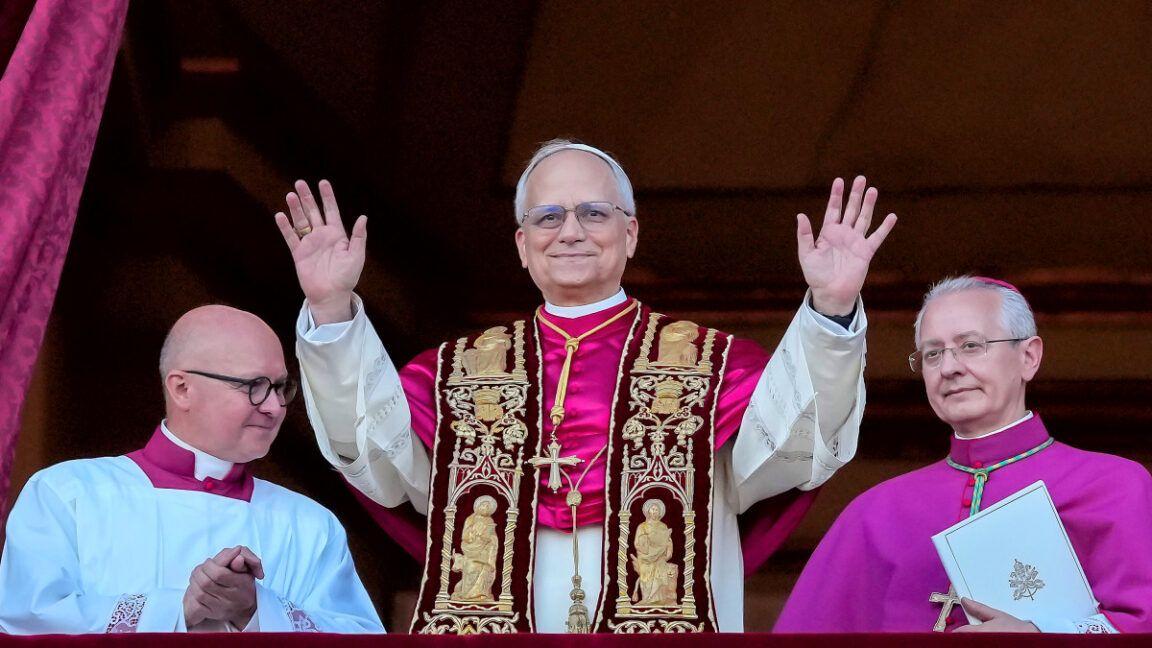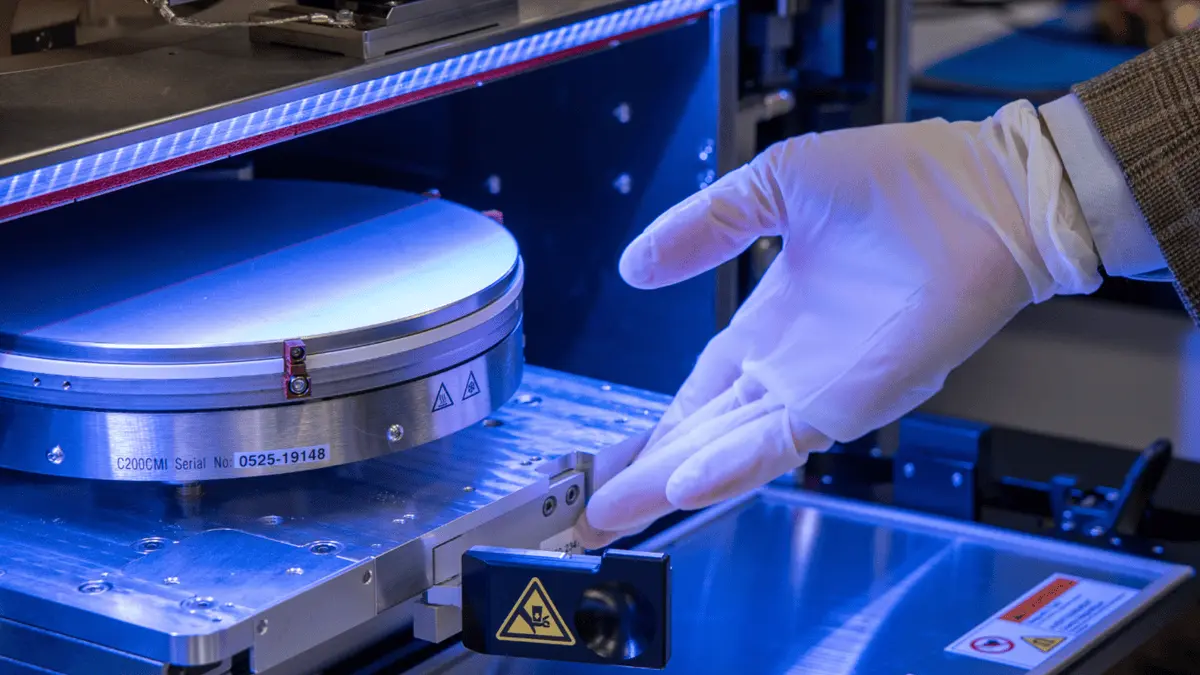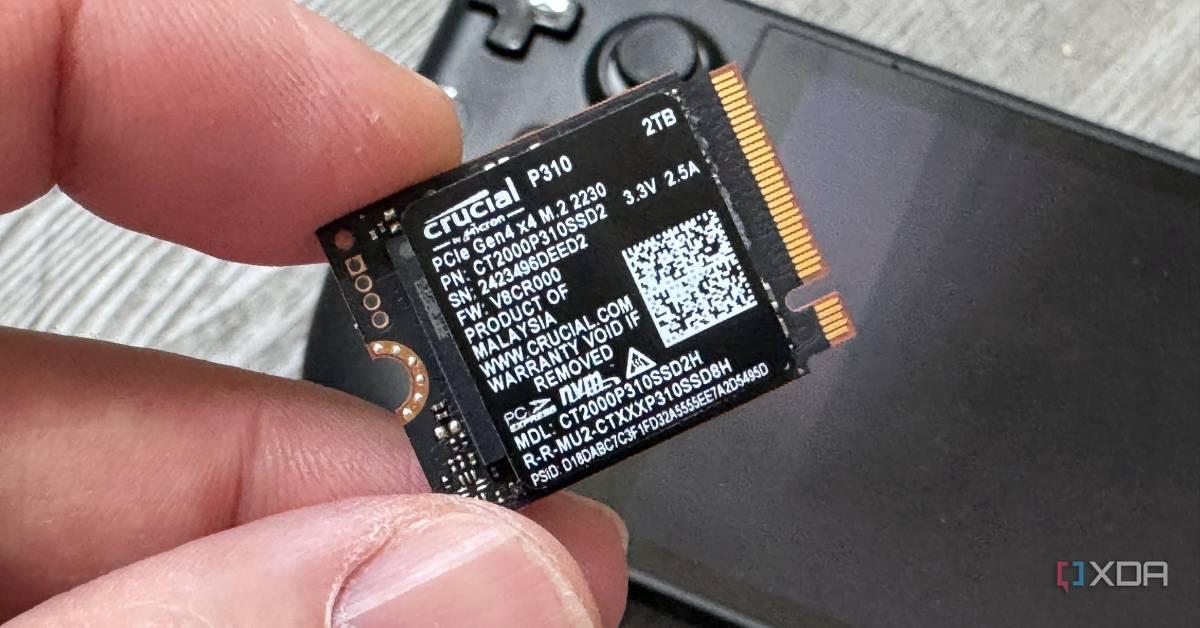AI Models and Prediction Markets Diverge on Next Pope Selection
4 Sources
4 Sources
[1]
Who's the Next Pope? Top AI Models Don't Agree With Prediction Markets - Decrypt
In the wake of Pope Francis's death, the College of Cardinals is already preparing to gather for the conclave next week to hold what could be the most important event in the catholic religion for the next couple of decades: Picking a new pope. During these days, Catholics pray for the Holy Spirit to give their leaders enough understanding and light to leave all differences aside and pick the best candidate to rule the church -- effectively merging the spiritual and terrestrial realms to come up with what has also historically been a very political decision. So who's the odds-on favorite to be the next pope? We queried 13 of the world's most advanced artificial intelligence models and tasked them with evaluating and predicting which cardinal is best positioned to lead the Catholic Church into its next chapter. (Though popes don't have to be chosen from the ranks of cardinals, historically this has been the case since the 14th century -- the movie "Conclave" notwithstanding.) Despite varying methodologies and perspectives, the AI systems pretty much concluded that Cardinal Luis Antonio Tagle of the Philippines would not only be the best candidate to guide the Church through its current challenges, but that he would indeed be the next pope. Interestingly, that pick differs from the leading prediction markets, including Polymarket, Kalshi and Myriad (disclosure: Myriad comes from Decrypt's parent company, DASTAN). While Tagle is a strong contender in those markets, human bettors were predicting that Cardinal Pietro Parolin -- or someone else entirely -- will be the next pope. This digital "conclave" offers an interesting window into how different analytical systems process the same complex question, and how they can arrive at remarkably similar conclusions even when approaching the problem from distinct angles. The analysis involved thirteen top-tier AI models: Claude, GPT-4o, GPT-4.5, Perplexity, Mistral, Meta AI, Grok-3, Gemini, Qwen 2.5 Max, You.com Research, DeepSeek R1, Microsoft Copilot, and even an open-source deep research agent representing the most advanced large language models currently available. Each agent has the capability to browse the web for information and provide a combination of reasoning capabilities and/or a deep research mode. We started with one base prompt: "Act as an expert in theology, Catholic geopolitics, and modern Catholicism. Evaluate all the options for the next pope and predict who will be the next pope and why. Also include who could be the best pope and why." This base prompt was further enhanced using the "concept elevation" technique that makes a prompt detailed enough for an AI agent to execute its task more accurately. That new prompt was fed to all the digital agents under the same conditions. These two questions ("Who will be the next pope?" and "Who would be the best pope?"), yielded different results, though there was significant overlap. Each AI system brought its own strengths and analytical frameworks to the task. Some focused heavily on statistical probability and historical conclave patterns, while others emphasized theological positioning, regional representation, or specific Church challenges. Several presented comprehensive dossiers on each candidate, analyzing their viability through multiple lenses. All the reports are available in our Github repository. Despite these different approaches, almost all the models included Cardinal Tagle in their shortlists, with Cardinals Pietro Parolin and Péter Erdő closely behind Multiple AI analyses emphasized Tagle's communication skills and media savvy as critical assets for leading the Church in an increasingly secular and digital world. He also appears to guarantee a continuation of Pope Francis' policies -- with the majority of the newly named cardinals being more progressive and from non-European countries. Despite most models leaning towards Tagle, it's important to note that several suggest Parolin might have a slight edge due to his extensive Vatican experience and connections. Papal conclaves have inspired betting markets for centuries, with Romans placing wagers on papal candidates since at least the 16th century despite periodic prohibitions. Today's sophisticated prediction markets continue this tradition through digital platforms. There's a similar sentiment between our models' picks and the market's favorites. However, when it comes to picking up one winner, Tagle was behind Parolin as of this writing. Current betting odds at Myriad Markets give Cardinal Pietro Parolin a slight edge at approximately 27.3% probability, with Cardinal Tagle close behind at around 21.7%. However, the general consensus with more than half the money wagered suggests the next pope will be someone else entirely Sentiment at Polymarket is pretty much the same as Myriad, with Pietro Parolin having 28% of the votes, followed by Tagle with 21%. Kalshi Markets also has Parolin leading the race, with Tagle slightly behind. Turkson and Zuppi are tied in third place, just like at Polymarket. The gap between algorithmic assessment and betting markets could be explained by the kind of information handled and how it's analyzed. Bettors have a lot more information at hand -- including what's not digitally, or publicly available. They may also be considering traditional odds-making wisdom and historical precedent. The AI models could only analyze publicly available information, missing the personal relationships, private conversations, and spiritual discernment that will ultimately shape the cardinals' votes. There could also be some bias involved. Betting markets may be incorporating the conclave's historical tendency toward compromise candidates. The AI assessments didn't really take this into consideration to evaluate their predictions -- or at least it wasn't mentioned by the models during their reasoning. There's an old Vatican saying that "he who enters the conclave as pope, emerges as a cardinal" and betting markets may be considering this, seeing Parolin as a consensus candidate instead of the first choice by those voting on the conclave -- which was the criteria used by many of our AI models. Regarding the question of who would be the best Pope, the decision is much more apparent with Cardinal Luis Antonio Tagle taking nearly two-thirds of the votes. Whether the actual College of Cardinals will reach the same conclusion remains to be seen. No AI model asked for divine inspiration.
[2]
Asked to predict the next pope, AI bots hedge bets
Paris (AFP) - Artificial intelligence was struggling on Wednesday to forecast the outcome of the notoriously secretive and unpredictable process by which Catholic cardinals elect a new pope. The April 21 death of Pope Francis triggered a period of mourning in the Catholic Church, but also kick-started the race for his successor, with everyone from Vatican insiders to bookmakers scrambling to guess who it will be. AFP asked four AI chatbots -- including OpenAI's ChatGPT and billionaire Elon Musk's Grok -- for insights into the potential frontrunners, with mixed results. Grok and Google's Gemini said their top contender is Italian Cardinal Pietro Parolin, the Vatican's number two during nearly all of Francis's papacy. "Based on current analysis and prominent discussions, Cardinal Pietro Parolin emerges as a strong contender," said Gemini. But it also listed some eight others -- including ChatGPT's leading pick. "If I had to make a prediction based on current trends, influence, and the direction the Church has taken under Pope Francis, Cardinal Luis Antonio Tagle stands out as the most likely candidate," Open AI's ChatGPT said. Tagle is Asia's frontrunner for the papacy and like Francis, seen as a leading advocate for the poor, migrants and marginalised people. But one similarity in the chatbots' responses stood out. Each emphasised the near impossibility of forecasting the outcome. "It's important to understand that while AI can analyze data and identify patterns, predicting the next Pope involves factors that go beyond data analysis," said Gemini. These include the cardinals' theological stances, age, experience, and the secrecy surrounding the vote. ChatGPT made it clear that its guess was "not a prediction in the crystal ball sense", but rather "a 'here's what the cardinals might consider' kind of thing". Meanwhile, French company Mistral AI refused to get dragged into the guessing game at all. "I don't have the ability to predict or speculate on who the next Pope will be," it said. Mistral did offer one suggestion: "For the most accurate and up-to-date information, I recommend following reliable news sources."
[3]
Will ChatGPT's prediction about the next pope come true? Speculations begin after Pope Francis' passing
Following Pope Francis' death at 88, the Catholic Church begins the secretive Conclave to elect his successor. AI tool ChatGPT predicts Cardinal Pietro Parolin as the front-runner, citing his diplomatic experience and role as Vatican Secretary of State. While betting markets favor him slightly, the outcome remains uncertain as 135 cardinals prepare for this historic decision. In a historic twist that blends ancient ritual with modern tech, the Roman Catholic Church finds itself at a remarkable crossroads. Following the passing of Pope Francis at the age of 88, the sacred process of electing a new spiritual leader is underway -- but with an unprecedented twist. For the first time in its 2,000-year history, the papal conclave has been pre-empted by artificial intelligence. As cardinals from around the world converge on Vatican City for the secretive conclave -- a centuries-old process conducted in utter seclusion behind locked doors -- artificial intelligence has already cast its vote. And it's betting on Cardinal Pietro Parolin, the seasoned Vatican Secretary of State, as the most likely successor to Pope Francis. The conclave, derived from the Latin term cum clave meaning "with key," will see 135 cardinals under the age of 80 locked inside the Sistine Chapel, cut off entirely from the outside world. Their sacred mission: to elect the next pope by a two-thirds majority vote. No smartphones, no whispers from the web -- only centuries of tradition, prayer, and ballots cast in silence. But while the cardinals deliberate, AI is already ahead. According to a report from MailOnline, OpenAI's ChatGPT -- trained on vast swathes of ecclesiastical history, betting odds, and current affairs -- forecasts that Parolin, a 70-year-old Italian diplomat-priest, stands as the frontrunner. Not only does he lead prediction markets like Polymarket with a 37% chance, but he's also viewed as the continuity candidate, able to bridge reformist and conservative factions alike. Cardinal Parolin's resume reads like a blueprint for papal succession. Having served as the Vatican's top diplomat since 2013, he is Pope Francis' right-hand man in many respects. Fluent in several languages and well-versed in navigating delicate geopolitical tensions -- including the controversial 2018 Vatican-China agreement -- he's both respected and pragmatic. But Parolin is not without criticism. His conservative stance, such as describing Ireland's 2015 vote to legalize same-sex marriage as "a defeat for humanity," may alienate some progressive electors. Yet in conclave dynamics, where no clear frontrunner often prevails outright, it is precisely such moderation and compromise that makes him a viable candidate. While Parolin leads the odds, the race is far from settled. His closest rival, 67-year-old Cardinal Luis Antonio Tagle -- often dubbed "the Asian Francis" -- remains a compelling contender. Known for his charisma, compassion, and cross-cultural appeal, Tagle could become the first Asian pope in Church history. AI analysis even acknowledges the razor-thin margin between Parolin's 37% and Tagle's 32%. Other names in contention include Ghana's Peter Turkson, who would be the first Black pope, and Hungary's Peter Erdo, a conservative favorite. Yet, as ChatGPT warns, conclave politics are notoriously unpredictable, often hinging on shifts in sentiment and strategic withdrawals. As the cardinals settle in, anticipation builds globally. Each day, up to four ballots may be cast. If no candidate reaches the necessary two-thirds majority, black smoke will rise from the chimney above the Sistine Chapel. Only when white smoke appears will the world know that a new pontiff has been chosen. The longest conclave ever lasted nearly three years in the 13th century, though recent elections have been swift. In 2013, Pope Francis was elected within two days. Once a consensus is reached, the chosen cardinal will accept -- if he chooses to -- and take on a papal name, donning the white vestments before stepping onto the balcony of St. Peter's Basilica to greet a waiting world. While AI can analyze data, parse history, and calculate odds, it cannot predict divine inspiration. And yet, its inclusion in this momentous chapter signals a fascinating intersection of faith and futurism. Whether it's Pietro Parolin or another papabile who emerges as the next Holy Father, one thing is certain: the smoke may be white, but in 2025, it's tinged with a digital glow.
[4]
Asked to predict the next pope, AI bots hedge bets - VnExpress International
Artificial intelligence was struggling to forecast the outcome of the notoriously secretive and unpredictable process by which Catholic cardinals elect a new pope. The April 21 death of Pope Francis triggered a period of mourning in the Catholic Church, but also kick-started the race for his successor, with everyone from Vatican insiders to bookmakers scrambling to guess who it will be. AFP asked four AI chatbots -- including OpenAI's ChatGPT and billionaire Elon Musk's Grok -- for insights into the potential frontrunners, with mixed results. Grok and Google's Gemini said their top contender is Italian Cardinal Pietro Parolin, the Vatican's number two during nearly all of Francis's papacy. "Based on current analysis and prominent discussions, Cardinal Pietro Parolin emerges as a strong contender," said Gemini. But it also listed some eight others -- including ChatGPT's leading pick. "If I had to make a prediction based on current trends, influence, and the direction the Church has taken under Pope Francis, Cardinal Luis Antonio Tagle stands out as the most likely candidate," Open AI's ChatGPT said. Tagle is Asia's frontrunner for the papacy and like Francis, seen as a leading advocate for the poor, migrants and marginalized people. But one similarity in the chatbots' responses stood out. Each emphasized the near impossibility of forecasting the outcome. "It's important to understand that while AI can analyze data and identify patterns, predicting the next Pope involves factors that go beyond data analysis," said Gemini. These include the cardinals' theological stances, age, experience, and the secrecy surrounding the vote. ChatGPT made it clear that its guess was "not a prediction in the crystal ball sense," but rather "a 'here's what the cardinals might consider' kind of thing." Meanwhile, French company Mistral AI refused to get dragged into the guessing game at all. "I don't have the ability to predict or speculate on who the next Pope will be," it said. Mistral did offer one suggestion: "For the most accurate and up-to-date information, I recommend following reliable news sources."
Share
Share
Copy Link
As the Catholic Church prepares to elect a new pope, AI models and prediction markets offer conflicting forecasts, highlighting the challenges in predicting such a complex and secretive process.

AI Models Predict Cardinal Tagle as Next Pope
In the wake of Pope Francis's death, artificial intelligence models and prediction markets are offering conflicting forecasts on who will be the next leader of the Catholic Church. A study involving 13 advanced AI models, including GPT-4, Claude, and Grok, has predicted that Cardinal Luis Antonio Tagle of the Philippines is the most likely candidate to become the next pope
1
.The AI analysis emphasized Tagle's communication skills and media savvy as critical assets for leading the Church in an increasingly secular and digital world. Additionally, his selection would align with Pope Francis's progressive policies and the trend of appointing cardinals from non-European countries
1
.Prediction Markets Favor Cardinal Parolin
Interestingly, prediction markets such as Polymarket, Kalshi, and Myriad show a different frontrunner. These markets, which allow users to bet on future events, currently favor Cardinal Pietro Parolin, with Tagle as a close second
1
. As of the latest data, Parolin has a 27-28% probability of becoming the next pope, while Tagle stands at around 21%1
.AI Models' Approach and Limitations
The AI models used a combination of web browsing capabilities and reasoning to analyze factors such as theological positioning, regional representation, and specific challenges facing the Church. However, these models are limited to publicly available information and cannot account for personal relationships, private conversations, or spiritual discernment that may influence the cardinals' votes
1
.Varied AI Responses and Uncertainty
When queried by AFP, different AI chatbots provided varied responses. While Google's Gemini and Elon Musk's Grok favored Cardinal Parolin, ChatGPT leaned towards Cardinal Tagle
2
. Notably, all AI models emphasized the difficulty in predicting the outcome of the papal election due to its secretive and complex nature2
.Related Stories
The Conclave Process and Candidates
The papal conclave, a centuries-old process, will involve 135 cardinals under the age of 80 voting in complete seclusion within the Sistine Chapel. The election requires a two-thirds majority to select the new pope
3
.Other potential candidates mentioned in the analyses include Cardinal Peter Turkson from Ghana, who could become the first Black pope, and Cardinal Peter Erdo from Hungary, a favorite among conservatives
3
.Implications and Limitations of AI Predictions
This unprecedented use of AI in forecasting a papal election highlights the intersection of ancient traditions with modern technology. However, it also underscores the limitations of AI in predicting outcomes that involve complex human factors and spiritual considerations
3
.References
Summarized by
Navi
[2]
Related Stories
AI's Attempt to Predict Papal Election Falls Short, Highlighting Challenges in Forecasting Unique Electoral Processes
09 May 2025•Science and Research

Pope Leo XIV Rejects AI Avatar, Warns of Technology's Impact on Humanity
19 Sept 2025•Technology
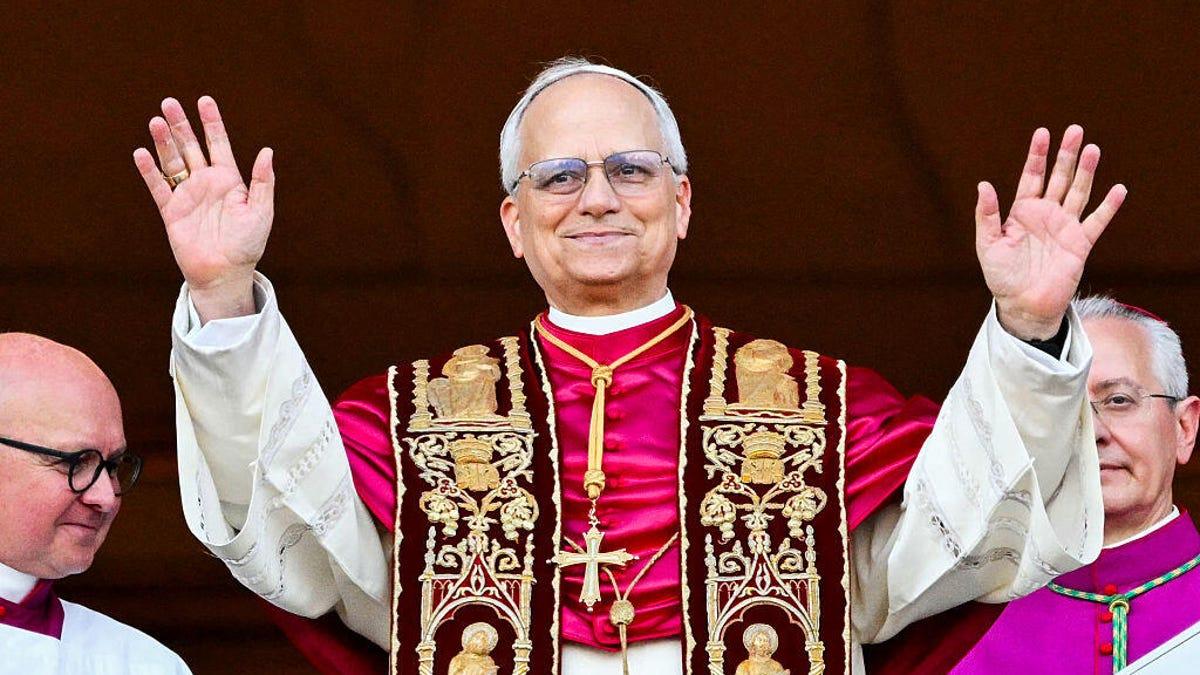
Pope Francis' Final Message: A Warning on Technology and AI
22 Apr 2025•Technology
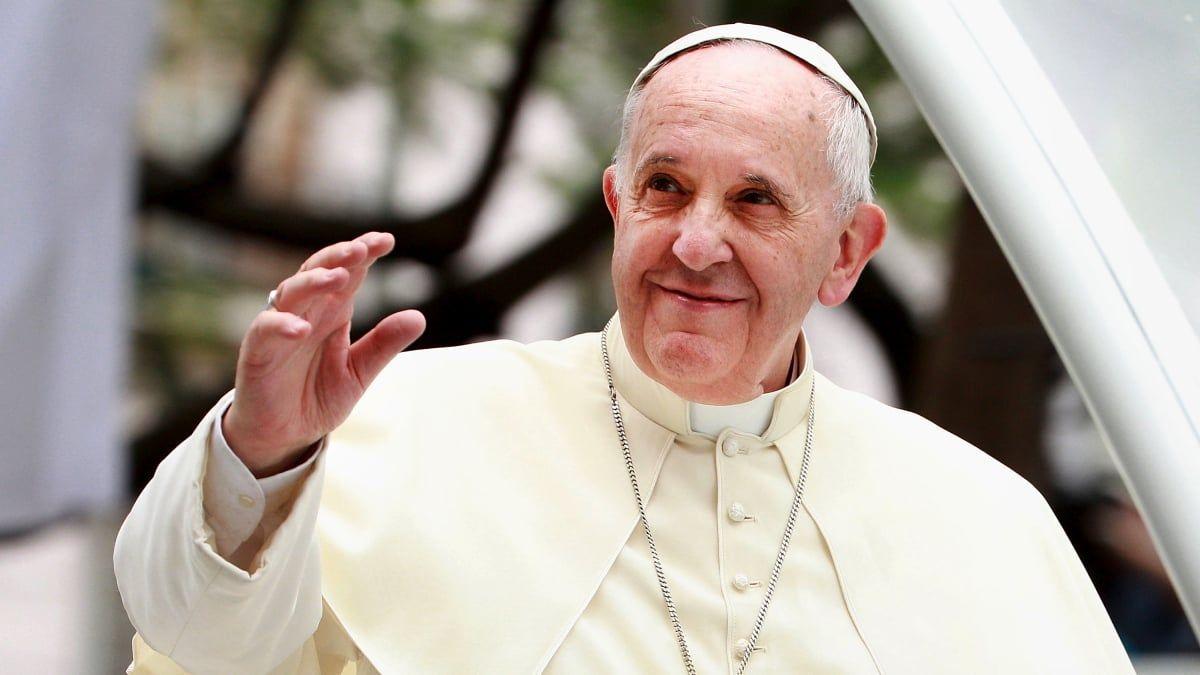
Recent Highlights
1
OpenAI releases GPT-5.2 AI model after code red memo targets Google's Gemini 3 threat
Technology

2
Disney invests $1 billion in OpenAI, licenses 200+ characters for Sora AI video generator
Technology

3
OpenAI faces wrongful death lawsuit after ChatGPT allegedly fueled murder-suicide tragedy
Policy and Regulation

